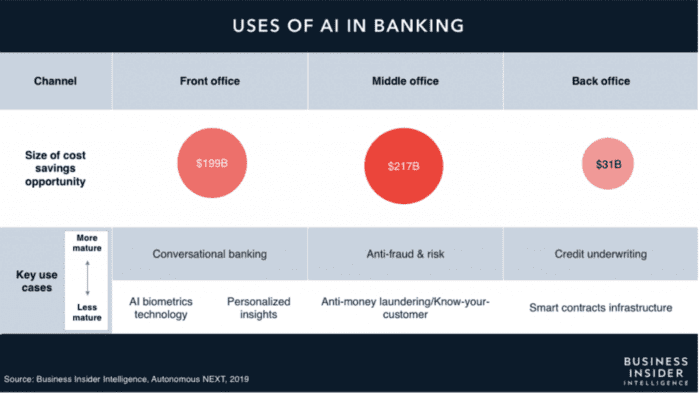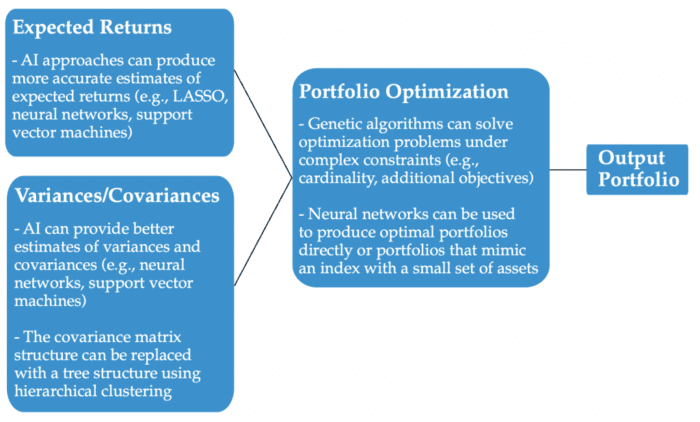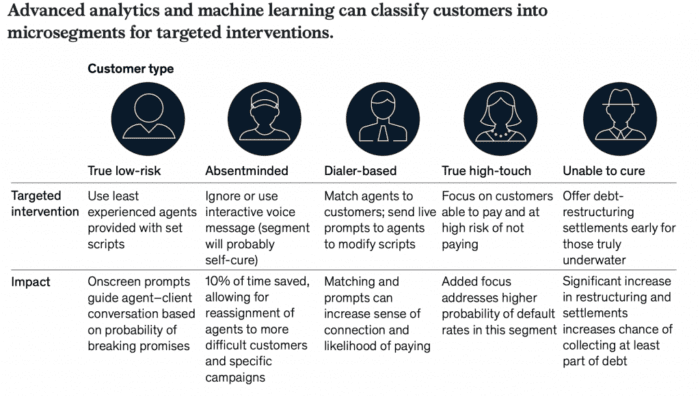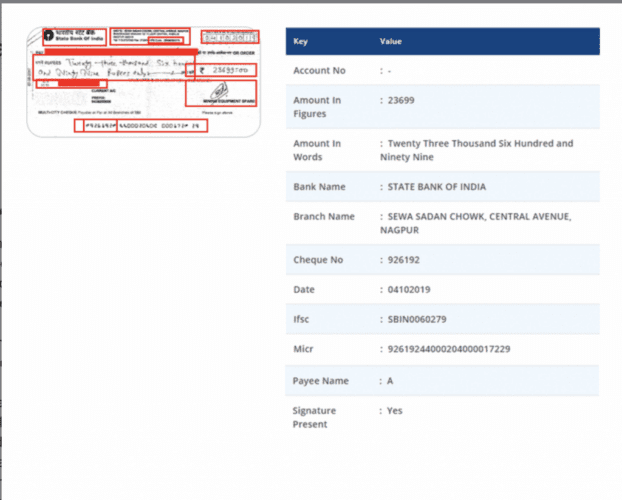Table of Contents
Computer Vision and Deep Learning for Banking and Finance
Banks are the financial backbone of any economy. As the primary credit supplier, they help businesses, institutions, and individuals by providing and managing short-term and long-term finance. In the last decades, banks worldwide have gone through a digital revolution that has laid the foundation for artificial intelligence (AI) adoption. As a result, financial institutions have started using AI to improve customer experience, manage portfolios and risk, enhance data security, and provide good loans.

According to Business Insider, around 90% of banks know the benefits of using AI in their operations and services. Moreover, many of them (about 75%) have started making huge investments in implementing and deploying AI-enabled solutions.
This series is about Computer Vision (CV) and Deep Learning (DL) for Industrial and Big Business Applications. In addition, this blog will cover the benefits, applications, challenges, and tradeoffs of using deep learning for banking and finance.
This lesson is the 3rd of the 5-lesson course: CV and DL for Industrial and Big Business Applications 101.
- Computer Vision and Deep Learning for Government
- Computer Vision and Deep Learning for Customer Service
- Computer Vision and Deep Learning for Banking and Finance (this tutorial)
- Computer Vision and Deep Learning for Agriculture
- Computer Vision and Deep Learning for Electricity
To learn about Computer Vision and Deep Learning for Banking and Finance, just keep reading.
Computer Vision and Deep Learning for Banking and Finance
Benefits
Here are some benefits of using Deep Learning for banking and finance.
Cost Reductions
AI can help automate banking workflows and operations to help perform repetitive tasks more efficiently and accurately than humans. This makes the system more cost-efficient and less error-prone. Further, AI-based services can be used 24×7 to provide customer support and cut costs associated with human agents.
According to Business Insider (Figure 1), by using AI applications, banks will save around $447 billion by 2023. The front and middle offices will account for $416 billion. According to TCS research, “banking and FS executives found that investment in AI helped them reduce production costs by 13%. Additionally, executives reported a 17% average revenue increase in the area of their AI initiatives.”

Customer Support
AI in bank applications helps customers by addressing their queries even on weekends and holidays. AI-based virtual assistants and chatbots provide personalized content for credit reports, loan offers, payment alerts, fraudulent activities, financial summaries, and customer analysis (e.g., Bank of America’s Erica virtual assistant, see Figure 2).

Enhanced Security
Fraudulent activities are very prominent in banking and finance and are designed to fool humans. However, AI algorithms can detect these fraudulent activities with much higher accuracy. Further, these algorithms help banks ensure regulatory compliance by monitoring wire transfers, preventing illegal transactions, detecting laundered money, and perpetrating financial crimes by looking at customer behaviors and patterns.
Better Decision Making
AI helps banks make better decisions for providing safe and profitable loans and managing portfolios. Currently, banks use credit scores, credit history, and customer references to determine a client’s creditworthiness. AI can look at customer behaviors and patterns to determine if a customer with limited credit history might make a good credit customer.
Applications
Portfolio Management
One of the best advantages of AI in banking is portfolio management. In addition, advanced AI technologies can bring everything to our fingertips, removing the need for in-person banking.
AI algorithms can perform fundamental analysis on the text extracted from annual reports, news articles, Twitter posts, and economic reports. The algorithms can find hidden correlations between various asset classes and pinpoint stocks that can perform using a range of financial or firm-level variables. LASSO regression/framework, for example, can also investigate which domestic industry or market returns are the most significant predictors of returns among all other markets or industries.
The results of the fundamental analysis can optimize asset allocation in financial portfolios. For example, AI techniques often provide better estimates of returns and covariances than more conventional methods. Further, they can help construct portfolios that meet performance targets more closely than portfolios created using traditional methods. For example, genetic algorithms can solve complex optimization problems with constraints (e.g., restricting the number of assets or setting minimum holding thresholds, see Figure 3).

Risk Management
There are two types of risk management: market risk and credit risk. Market risk refers to the likelihood of loss because of market fluctuations. In contrast, credit risk refers to the risk of a counterparty not fulfilling its contractual obligations resulting in a loss of value.
Risk management is another domain where AI can excel. AI techniques can incorporate qualitative and quantitative data from news reports, online posts, and financial contracts to forecast risk variables, validate and use them to minimize the risk, and ensure that absolute risk is acceptable to clients (Figure 4).

Market Risk: Satellite images are being analyzed to predict sales at supermarkets or future crop harvests. Unsupervised AI approaches can detect anomalies in risk model output by evaluating all projections generated by the model, automatically identifying any irregularities, and supervising AI techniques to create benchmark forecasts as part of model validation practice. Comparing model results and benchmark forecasts will indicate whether the risk model produces predictions that differ significantly from AI’s.
Credit Risk: Asset managers need to monitor the credit risk of entire portfolios of individuals and their transactions. This practice involves modeling the solvency risk associated with institutions issuing financial products (e.g., equities, bonds, swaps, and options). Multivariate discriminant analysis, logit, probit models, support vector machines (SVMs), genetic algorithms, deep neural networks (DNNs), and their ensembles are widely used for credit risk modeling.
Financial institutions (e.g., J.P. Morgan, Bank of America, Morgan Stanley, and S&P Global) use Kensho, which offers analytical solutions using a combination of cloud computing and natural language processing (NLP). As a result, the system can provide answers to complex financial questions in plain English. Similarly, Ayasdi provides on-premise anti-money laundering (AML) solutions for enterprises to understand and manage risk.
Fraud Security
Banks and financial institutions are highly prone to fraudulent activities. Hence, it becomes essential to have a secure and robust system to protect the interests of their customers. Therefore, financial institutions must closely monitor potential fraudulent schemes, including phone/SMS fraud, illegal remittance using online banking, and illegal stock transactions. Most common fraud activities include:
- Unauthorized Transactions: Transactions where the customer does not approve nor is unaware. According to a Forbes report, roughly 8 in 10 mobile banking users are concerned about credit card fraud.
- Phishing Scams: There were more than $54 million in phishing scams that year through email and SMS messages.
- Identity Theft: According to Javelin’s 2021 Identity Fraud Study, total financial losses from identity fraud in 2020 were around $13 billion.
Most fraud detection systems use rule-based algorithms to trigger alerts in conditions such as “amount paid” and “number of deposits.” However, such vague rules can lead to false positives and unnecessary alerts, increasing staff workload. To improve efficiency, AI can learn from the past judgments made by the fraud monitoring staff and automatically filter out false positives based on similar patterns. These algorithms consider variables such as transaction amount, time, card use frequency, IP address of purchase, etc. (Figure 5).

Vectra is an AI-powered platform that automates threat detection, revealing hidden attackers explicitly targeting financial institutions. Shape Security, another AI-powered service, provides security against credit application fraud, credential stuffing, scraping, and gift card cracking by pinpointing fake users.
Regulatory Compliance
Banks and financial institutions must follow the compliance rules created by supervisory organizations in the banking sector. Noncompliance with these rules can lead to fines and loss of banking license. In addition, compliance rules are subject to frequent change, during which banks need to change and update their workflows to comply with the new regulations. During this period, they are also vulnerable to cyber and fraud attacks.
AI-based software can help banks identify which compliance rules are relevant and what workflow and services are affected and need updating. In addition, NLP can keep the financial institution and the client up-to-date with regulatory changes by analyzing and classifying documents and extracting helpful information like client information, products, and processes that can be impacted by the regulatory change (Figure 6).

Quill offers an NLP-based service that automatically selects a data chart and generates a few sentences to explain the insights. Quill-generated Suspicious Activity Reports (mandatory reports that banks and financial institutions need to file with supervisory bodies) are robust enough to ensure a bank remains compliant.
Conduct Surveillance, another NLP tool, can analyze human-agent conversations that have been recorded to determine if bank employees are acting within compliance when they interact with clients.
Loan and Credit Decisions
Providing safe, creditworthy, and profitable loans is essential for the functioning of banks. Currently, the banking industry is too confined to using variables like credit scores, credit history, and customer references to determine the creditworthiness of a customer seeking a loan. However, using AI and machine learning (ML) models, banks can leverage other non-traditional sources like bank transactions, investments, and tax returns to better determine a customer’s creditworthiness, loan limits, and pricing (Figure 7).

Credit Qualification: For many years, rule-based algorithms (e.g., logistic regressions) have been used to determine a customer’s creditworthiness. However, these days giant banking and financial institutions have started building complex models capable of analyzing structured and unstructured data collected from social media, browsing history, telecommunications, etc. The end-to-end automated system provides the likelihood of a person defaulting. In addition, banks can refine their qualification model by combining the computerized system with manual reviewing (for high-risk credit).
Limit Assessment: AI and ML algorithms can determine the maximum amount a customer can borrow. Systems leverage income statements, tax returns, monthly and annual spending, and customer investments to determine a customer’s disposable income and capacity to make regular loan payments.
Pricing: Banks efficiently decide the interest rates based on creditworthiness and the maximum loan limit of a customer. This helps them offer competitive rates, keep their risk costs down, and optimize the balance of total asset volume, risk, and interest income within a lending portfolio.
Platforms like Enova and Ocrolus are utilizing AI and ML to analyze individuals’ bank statements, pay stubs, tax documents, mortgage forms, and invoices and provide advanced analytics to businesses and banks to facilitate secure lending.
Kenya’s mSurvey, a startup, is using mobile phone applications to collect requisite data needed to feed and build real-time profiles for customers. AI and ML algorithms can easily use this real-time to determine their creditworthiness.
Process Automation
Everyday banking tasks include:
- filling out forms (e.g., credit card, application, bank opening, etc.)
- clearing checks
- processing Know Your Clients (KYCs)
- clearing customer doubts, etc.
Using AI-based services, employees can efficiently carry out mundane and time-consuming tasks. For example, banking applications frequently ask clients to take a selfie and provide an ID card to perform KYC verification. An AI algorithm behind the application checks if the selfie matches the ID card’s photo while verifying that the ID is not fake.
Arya.ai (Figure 8) automates check-processing and clearing using 6 different AI models for various fields, including date, magnetic ink character recognition (MICR), the amount in words and figures, account number, and signature extraction and verification. It can process 15-20 checks per second on standard production infrastructure.

The Adobe Automated Forms Conversion service uses deep learning to convert PDF forms to device-friendly, responsive, and HTML5-based adaptive formats to eliminate paper-based forms and make form completion more interactive.
Challenges
AI Bias
AI bias can arise when humans bring their assumptions while reading/annotating data or building the machine learning pipeline. A biased model can seriously impact the credit decision-making capability by biasing its prediction based on socio-economic factors. An intuitive way to bias the systems is to strip such variables from the data. However, as you reduce data quality, performance tends to drop.
Regularizing the algorithm is another approach that aims to penalize model parameters if they treat the minority or protected classes differently. For example, as a regularization, one can use the unfairness score, which measures the gap between different outcomes for people belonging to other classes and risk profiles.
Explainability
Explainability is essential for financial institutions as they must provide the logical rationale behind their credit-issuing decisions to potential customers. For example, imagine a person receiving a bad credit score and getting his loan declined when he needs it the most. Just saying that the ‘The computer did it’ doesn’t sound good. Furthermore, an explainable model can help the bank agents understand if the model’s decision is biased because of socio-economic factors. Sometimes, using large and complex models to get a few extra percentages of points is not a good idea as they have poor explainability.
Customer Mistrust and Data Security
Customer mistrust is the biggest challenge in adopting AI in the banking sector. Everyone has a conservative side toward their hard-earned money, and giving them access to a black-box algorithm doesn’t seem like the right choice to many people. Any mistakes in the management of risk and portfolio can cost customers. Further, any breach in the AI system can leak confidential and sensitive data about the customers.
Figure 9 mentions another challenge of using AI in the banking sector.

What's next? We recommend PyImageSearch University.
86+ total classes • 115+ hours hours of on-demand code walkthrough videos • Last updated: December 2025
★★★★★ 4.84 (128 Ratings) • 16,000+ Students Enrolled
I strongly believe that if you had the right teacher you could master computer vision and deep learning.
Do you think learning computer vision and deep learning has to be time-consuming, overwhelming, and complicated? Or has to involve complex mathematics and equations? Or requires a degree in computer science?
That’s not the case.
All you need to master computer vision and deep learning is for someone to explain things to you in simple, intuitive terms. And that’s exactly what I do. My mission is to change education and how complex Artificial Intelligence topics are taught.
If you're serious about learning computer vision, your next stop should be PyImageSearch University, the most comprehensive computer vision, deep learning, and OpenCV course online today. Here you’ll learn how to successfully and confidently apply computer vision to your work, research, and projects. Join me in computer vision mastery.
Inside PyImageSearch University you'll find:
- ✓ 86+ courses on essential computer vision, deep learning, and OpenCV topics
- ✓ 86 Certificates of Completion
- ✓ 115+ hours hours of on-demand video
- ✓ Brand new courses released regularly, ensuring you can keep up with state-of-the-art techniques
- ✓ Pre-configured Jupyter Notebooks in Google Colab
- ✓ Run all code examples in your web browser — works on Windows, macOS, and Linux (no dev environment configuration required!)
- ✓ Access to centralized code repos for all 540+ tutorials on PyImageSearch
- ✓ Easy one-click downloads for code, datasets, pre-trained models, etc.
- ✓ Access on mobile, laptop, desktop, etc.
Summary
Financial institutions have started using AI in the following ways to make their systems more cost-efficient, less error-prone, and more secure:
- Portfolio Management: AI algorithms can perform fundamental analysis on the text extracted from annual reports, news articles, Twitter posts, and economic reports. This analysis is also used to optimize asset allocation in financial portfolios.
- Risk Management: AI techniques can incorporate qualitative and quantitative data from news reports, online posts, and financial contracts to forecast risk variables, validate and use them to minimize the risk, and ensure that absolute risk is acceptable to clients.
- Fraud Security: AI can learn from the past judgments made by the fraud monitoring staff and automatically filter out false positives based on similar patterns.
- Regulatory Compliance: AI can identify which compliance rules are relevant and what workflow and services are affected and need to be updated. NLP can extract helpful information that can be impacted by regulatory change.
- Loan and Credit: AI and ML models can leverage non-traditional sources like bank transactions, investments, and tax returns to better determine the creditworthiness, loan limits, and pricing of a customer.
- Process Automation: With AI-based services, employees can efficiently carry out mundane and time-consuming tasks like completing forms (e.g., credit card, application, bank opening, etc.), clearing checks, processing KYCs, clearing customer doubts, etc.
However, using AI in banking applications comes with its challenges:
- A biased model can seriously impact the credit decision-making capability by biasing its prediction based on socio-economic factors.
- Explainability is essential for financial institutions as they must provide the logical rationale behind their credit-issuing decisions to potential customers.
- Everyone has a conservative side toward their hard-earned money, and giving them access to a black-box algorithm doesn’t seem like the right choice to many people.
- Any breach in the AI system can leak confidential and sensitive data about the customers.
I hope this post helped you understand the benefits, applications, challenges, and tradeoffs of using deep learning in banking and finance. Stay tuned for another lesson where we will discuss deep learning and computer vision applications for agriculture.
Citation Information
Mangla, P. “Computer Vision and Deep Learning for Banking and Finance,” PyImageSearch, P. Chugh, R. Raha, K. Kudriavtseva, and S. Huot, eds., 2022, https://pyimg.co/up7ad
@incollection{Author_2022_BF,
author = {Puneet Mangla},
title = {Computer Vision and Deep Learning for Banking and Finance},
booktitle = {PyImageSearch},
editor = {Puneet Chugh and Ritwik Raha and Kseniia Kudriavtseva and Susan Huot},
year = {2022},
note = {https://pyimg.co/up7ad},
}

Unleash the potential of computer vision with Roboflow - Free!
- Step into the realm of the future by signing up or logging into your Roboflow account. Unlock a wealth of innovative dataset libraries and revolutionize your computer vision operations.
- Jumpstart your journey by choosing from our broad array of datasets, or benefit from PyimageSearch’s comprehensive library, crafted to cater to a wide range of requirements.
- Transfer your data to Roboflow in any of the 40+ compatible formats. Leverage cutting-edge model architectures for training, and deploy seamlessly across diverse platforms, including API, NVIDIA, browser, iOS, and beyond. Integrate our platform effortlessly with your applications or your favorite third-party tools.
- Equip yourself with the ability to train a potent computer vision model in a mere afternoon. With a few images, you can import data from any source via API, annotate images using our superior cloud-hosted tool, kickstart model training with a single click, and deploy the model via a hosted API endpoint. Tailor your process by opting for a code-centric approach, leveraging our intuitive, cloud-based UI, or combining both to fit your unique needs.
- Embark on your journey today with absolutely no credit card required. Step into the future with Roboflow.

Join the PyImageSearch Newsletter and Grab My FREE 17-page Resource Guide PDF
Enter your email address below to join the PyImageSearch Newsletter and download my FREE 17-page Resource Guide PDF on Computer Vision, OpenCV, and Deep Learning.

Comment section
Hey, Adrian Rosebrock here, author and creator of PyImageSearch. While I love hearing from readers, a couple years ago I made the tough decision to no longer offer 1:1 help over blog post comments.
At the time I was receiving 200+ emails per day and another 100+ blog post comments. I simply did not have the time to moderate and respond to them all, and the sheer volume of requests was taking a toll on me.
Instead, my goal is to do the most good for the computer vision, deep learning, and OpenCV community at large by focusing my time on authoring high-quality blog posts, tutorials, and books/courses.
If you need help learning computer vision and deep learning, I suggest you refer to my full catalog of books and courses — they have helped tens of thousands of developers, students, and researchers just like yourself learn Computer Vision, Deep Learning, and OpenCV.
Click here to browse my full catalog.